Похожие презентации:
Writing Basic SQL Statements. Select functions
1. Writing Basic SQL Statements
1Writing Basic
SQL Statements
2. Objectives
After completing this lesson, you shouldbe able to do the following:
• List the capabilities of SQL SELECT
statements
• Execute a basic SELECT statement
• Differentiate between SQL statements
and SQL*Plus commands
1-2
3. Capabilities of SQL SELECT Statements
SelectionProjection
Table 1
Table 1
Table 1
1-3
Join
Table 2
4. Basic SELECT Statement
SELECTFROM
[DISTINCT] {*, column [alias],...}
table;
• SELECT identifies what columns
• FROM identifies which table
1-4
5. Writing SQL Statements
• SQL statements are not case sensitive.• SQL statements can be on one or
more lines.
• Keywords cannot be abbreviated or
split across lines.
• Clauses are usually placed on
separate lines.
• Tabs and indents are used to enhance
readability.
1-5
6. Selecting All Columns
SQL> SELECT *2 FROM
dept;
DEPTNO
--------10
20
30
40
1-6
DNAME
-------------ACCOUNTING
RESEARCH
SALES
OPERATIONS
LOC
------------NEW YORK
DALLAS
CHICAGO
BOSTON
7. Selecting Specific Columns
SQL> SELECT deptno, loc2 FROM
dept;
DEPTNO
--------10
20
30
40
1-7
LOC
------------NEW YORK
DALLAS
CHICAGO
BOSTON
8. Column Heading Defaults
• Default justification– Left: Date and character data
– Right: Numeric data
• Default display: Uppercase
1-8
9. Arithmetic Expressions
Create expressions on NUMBER and DATEdata by using arithmetic operators.
Operator
1-9
Description
+
Add
-
Subtract
*
Multiply
/
Divide
10. Using Arithmetic Operators
SQL> SELECT ename, sal, sal+3002 FROM
emp;
ENAME
SAL
SAL+300
---------- --------- --------KING
5000
5300
BLAKE
2850
3150
CLARK
2450
2750
JONES
2975
3275
MARTIN
1250
1550
ALLEN
1600
1900
...
14 rows selected.
1-10
11. Operator Precedence
* / +_
• Multiplication and division take priority
over addition and subtraction.
• Operators of the same priority are
evaluated from left to right.
• Parentheses are used to force
prioritized evaluation and to clarify
statements.
1-11
12. Operator Precedence
SQL> SELECT ename, sal, 12*sal+1002 FROM
emp;
ENAME
SAL 12*SAL+100
---------- --------- ---------KING
5000
60100
BLAKE
2850
34300
CLARK
2450
29500
JONES
2975
35800
MARTIN
1250
15100
ALLEN
1600
19300
...
14 rows selected.
1-12
13. Using Parentheses
SQL> SELECT ename, sal, 12*(sal+100)2 FROM
emp;
ENAME
SAL 12*(SAL+100)
---------- --------- ----------KING
5000
61200
BLAKE
2850
35400
CLARK
2450
30600
JONES
2975
36900
MARTIN
1250
16200
...
14 rows selected.
1-13
14. Defining a Null Value
• A null is a value that is unavailable,unassigned, unknown, or inapplicable.
• A null is not the same as zero or a blank
space.
SQL> SELECT
2 FROM
ename, job, comm
emp;
ENAME
JOB
COMM
---------- --------- --------KING
PRESIDENT
BLAKE
MANAGER
...
TURNER
SALESMAN
0
...
14 rows selected.
1-14
15. Null Values in Arithmetic Expressions
Arithmetic expressions containing a nullvalue evaluate to null.
SQL> select ename NAME, 12*sal+comm
2 from
emp
3 WHERE ename='KING';
NAME
12*SAL+COMM
---------- ----------KING
1-15
16. Defining a Column Alias
• Renames a column heading• Is useful with calculations
• Immediately follows column name;
optional AS keyword between column
name and alias
• Requires double quotation marks if it
contains spaces or special characters
or is case sensitive
1-16
17. Using Column Aliases
SQL> SELECT ename AS name, sal salary2 FROM
emp;
NAME
SALARY
------------- --------...
SQL> SELECT ename "Name",
2
sal*12 "Annual Salary"
3 FROM
emp;
Name
Annual Salary
------------- ------------...
1-17
18. Concatenation Operator
• Concatenates columns or characterstrings to other columns
• Is represented by two vertical bars (||)
• Creates a resultant column that is a
character expression
1-18
19. Using the Concatenation Operator
SQL> SELECT2 FROM
ename||job AS "Employees"
emp;
Employees
------------------KINGPRESIDENT
BLAKEMANAGER
CLARKMANAGER
JONESMANAGER
MARTINSALESMAN
ALLENSALESMAN
...
14 rows selected.
1-19
20. Literal Character Strings
• A literal is a character, expression, ornumber included in the SELECT list.
• Date and character literal values must
be enclosed within single quotation
marks.
• Each character string is output once for
each row returned.
1-20
21. Using Literal Character Strings
SQL> SELECT ename ||' '||'is a'||' '||job2
AS "Employee Details"
3 FROM
emp;
Employee Details
------------------------KING is a PRESIDENT
BLAKE is a MANAGER
CLARK is a MANAGER
JONES is a MANAGER
MARTIN is a SALESMAN
...
14 rows selected.
1-21
22. Duplicate Rows
The default display of queries is all rows,including duplicate rows.
SQL> SELECT deptno
2 FROM
emp;
DEPTNO
--------10
30
10
20
...
14 rows selected.
1-22
23. Eliminating Duplicate Rows
Eliminate duplicate rows by using theDISTINCT keyword in the SELECT clause.
SQL> SELECT DISTINCT deptno
2 FROM
emp;
DEPTNO
--------10
20
30
1-23
24. SQL and SQL*Plus Interaction
SQL StatementsBuffer
SQL Statements
Server
SQL*Plus
SQL*Plus
Commands
Formatted Report
1-24
Query Results
25. SQL Statements Versus SQL*Plus Commands
SQL• A language
• ANSI standard
• Keyword cannot be
abbreviated
• Statements manipulate
data and table
definitions in the
database
SQL
statements
1-25
SQL
buffer
SQL*Plus
• An environment
• Oracle proprietary
• Keywords can be
abbreviated
• Commands do not
allow manipulation of
values in the database
SQL*Plus
commands
SQL*Plus
buffer
26. Overview of SQL*Plus
• Log in to SQL*Plus.• Describe the table structure.
• Edit your SQL statement.
• Execute SQL from SQL*Plus.
• Save SQL statements to files and
append SQL statements to files.
• Execute saved files.
• Load commands from file to buffer
to edit.
1-26
27. Logging In to SQL*Plus
• From Windows environment:• From command line:
sqlplus [username[/password
[@database]]]
1-27
28. Displaying Table Structure
Use the SQL*Plus DESCRIBE command todisplay the structure of a table.
DESC[RIBE] tablename
1-28
29. Displaying Table Structure
SQL> DESCRIBE deptName
Null?
----------------- -------DEPTNO
NOT NULL
DNAME
LOC
1-29
Type
-----------NUMBER(2)
VARCHAR2(14)
VARCHAR2(13)
30. SQL*Plus Editing Commands
• A[PPEND] text• C[HANGE] / old / new
• C[HANGE] / text /
• CL[EAR] BUFF[ER]
• DEL
• DEL n
• DEL m n
1-30
31. SQL*Plus Editing Commands
• I[NPUT]• I[NPUT] text
• L[IST]
• L[IST] n
• L[IST] m n
• R[UN]
• n
• n text
• 0 text
1-31
32. SQL*Plus File Commands
• SAVE filename• GET filename
• START filename
• @ filename
• EDIT filename
• SPOOL filename
1-32
33. Summary
SELECTFROM
[DISTINCT] {*,column[alias],...}
table;
Use SQL*Plus as an environment to:
• Execute SQL statements
• Edit SQL statements
1-33
34. Practice Overview
• Selecting all data from different tables• Describing the structure of tables
• Performing arithmetic calculations and
specifying column names
• Using SQL*Plus editor
1-34
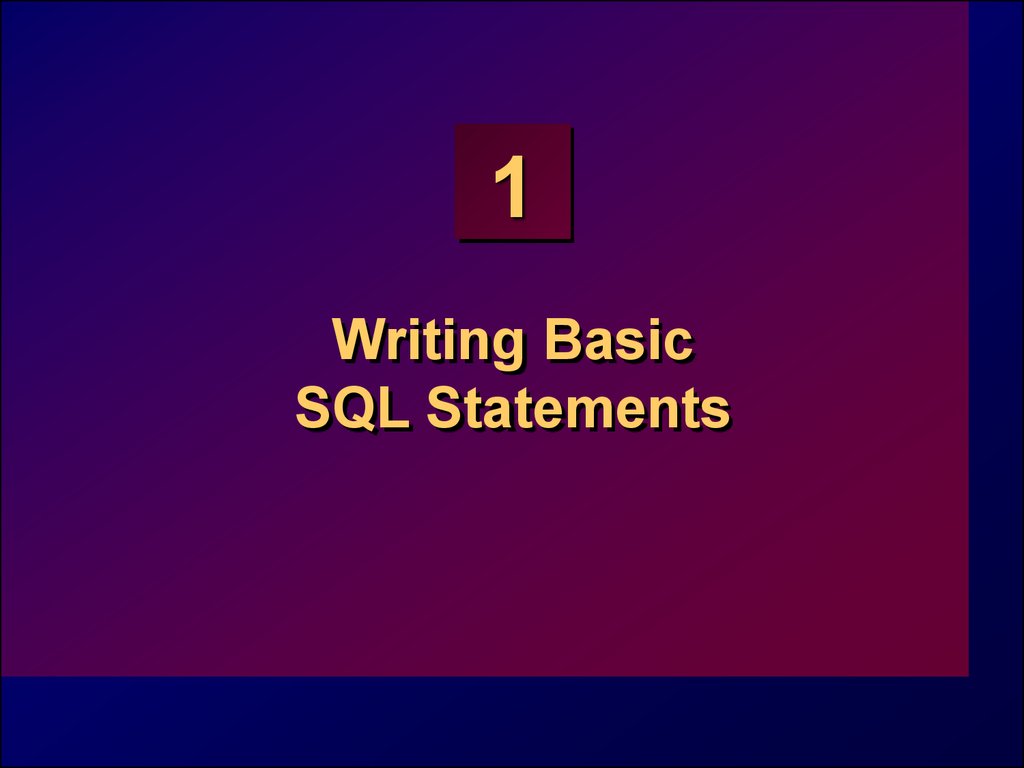

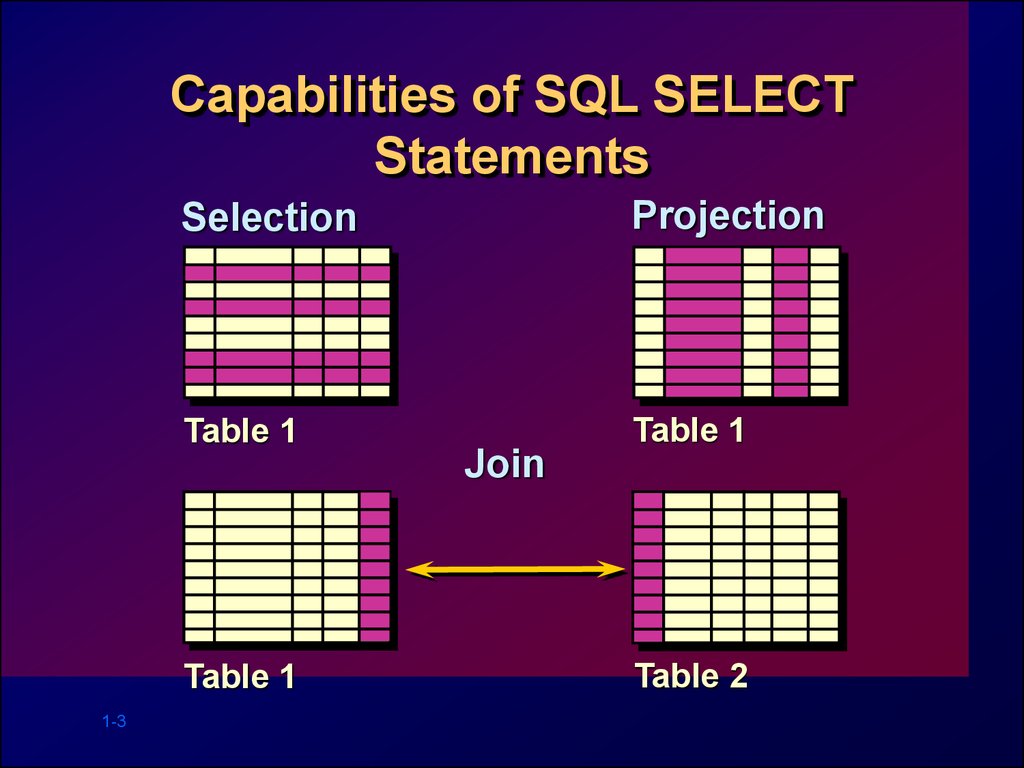

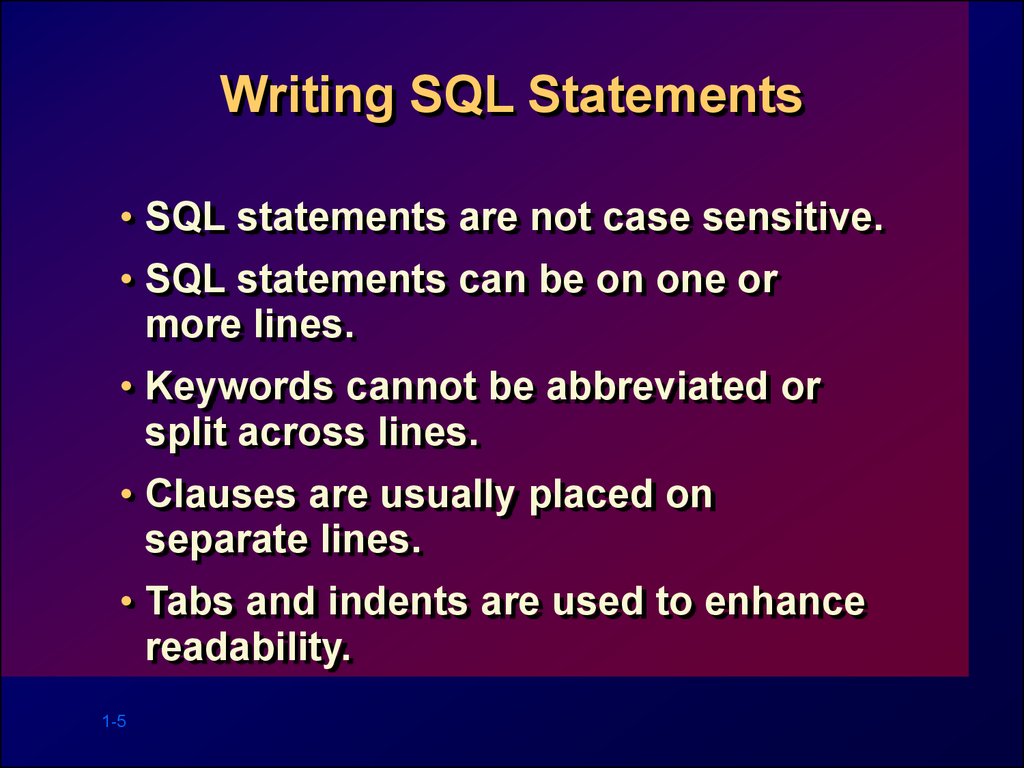
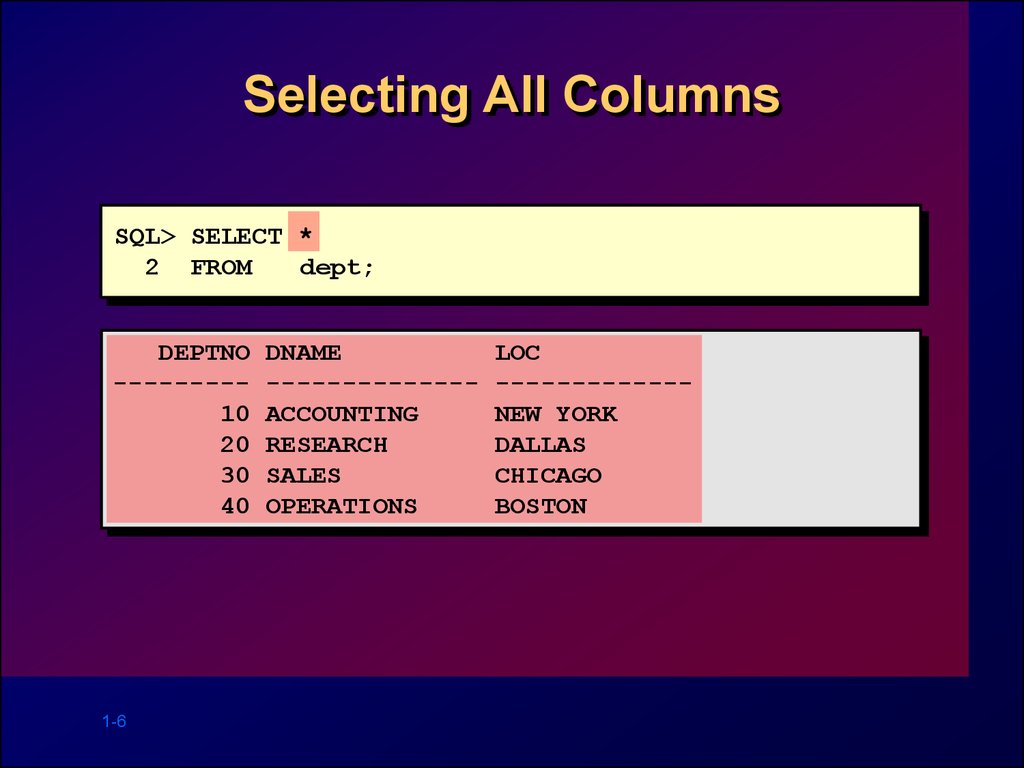
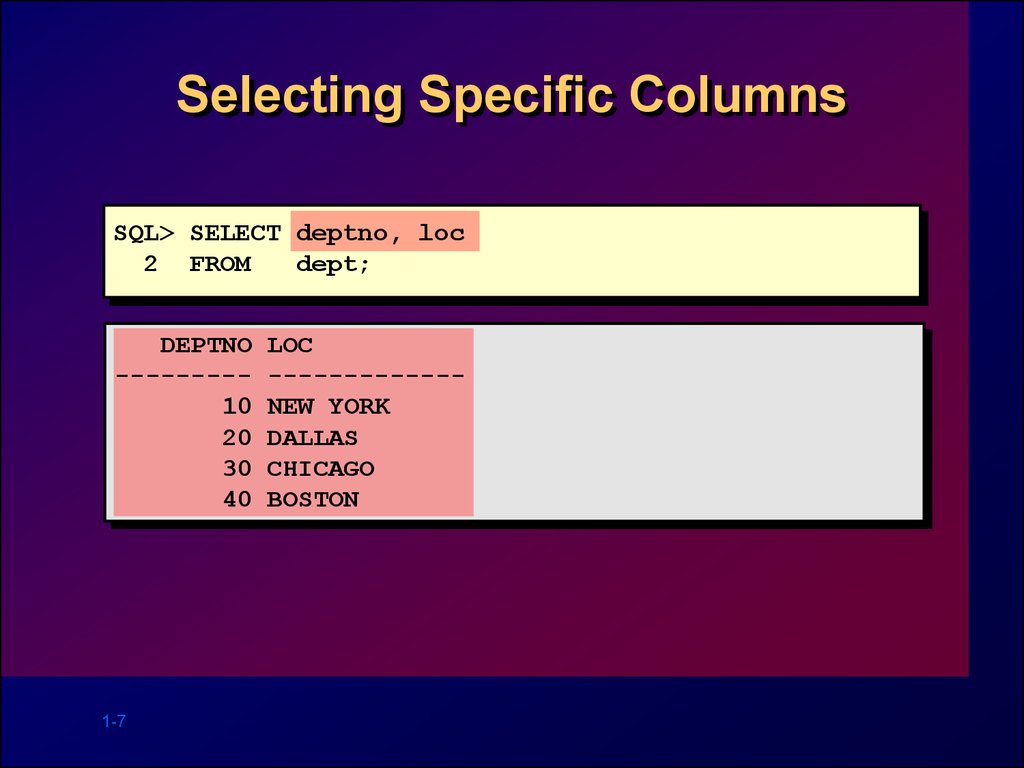
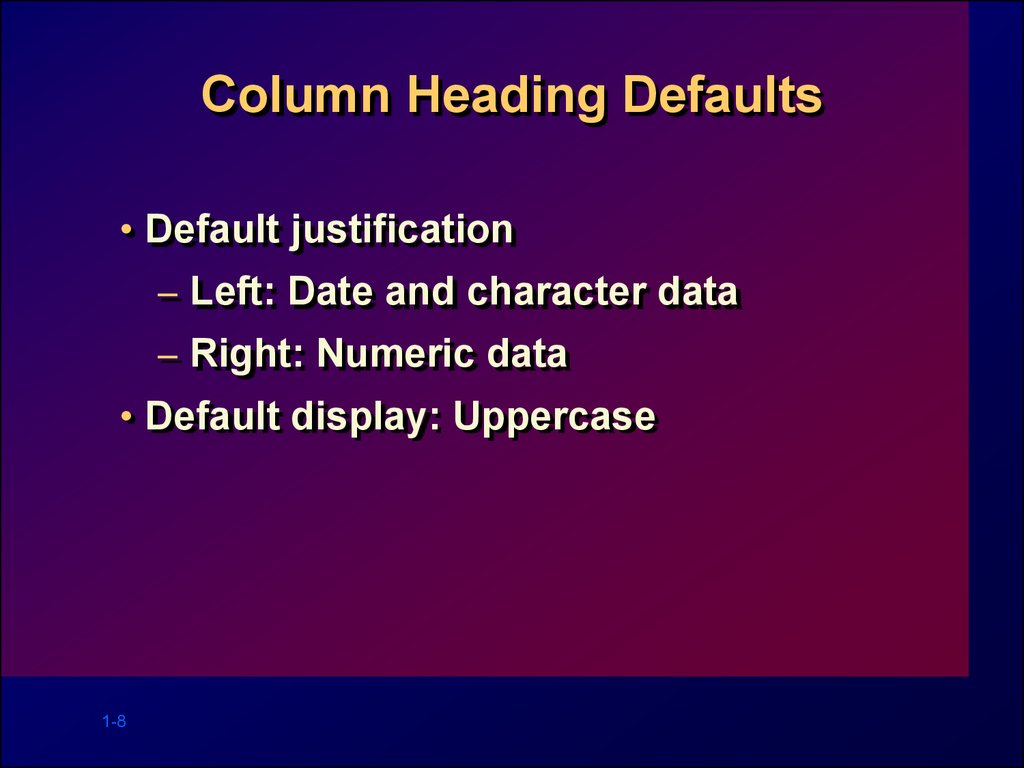
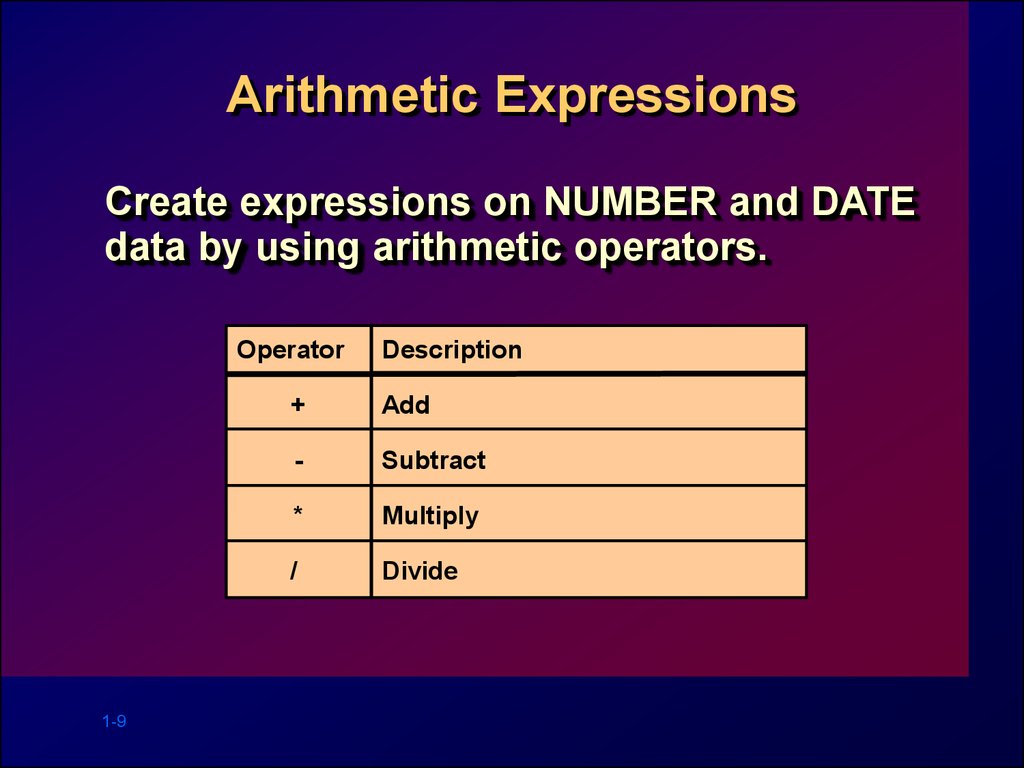
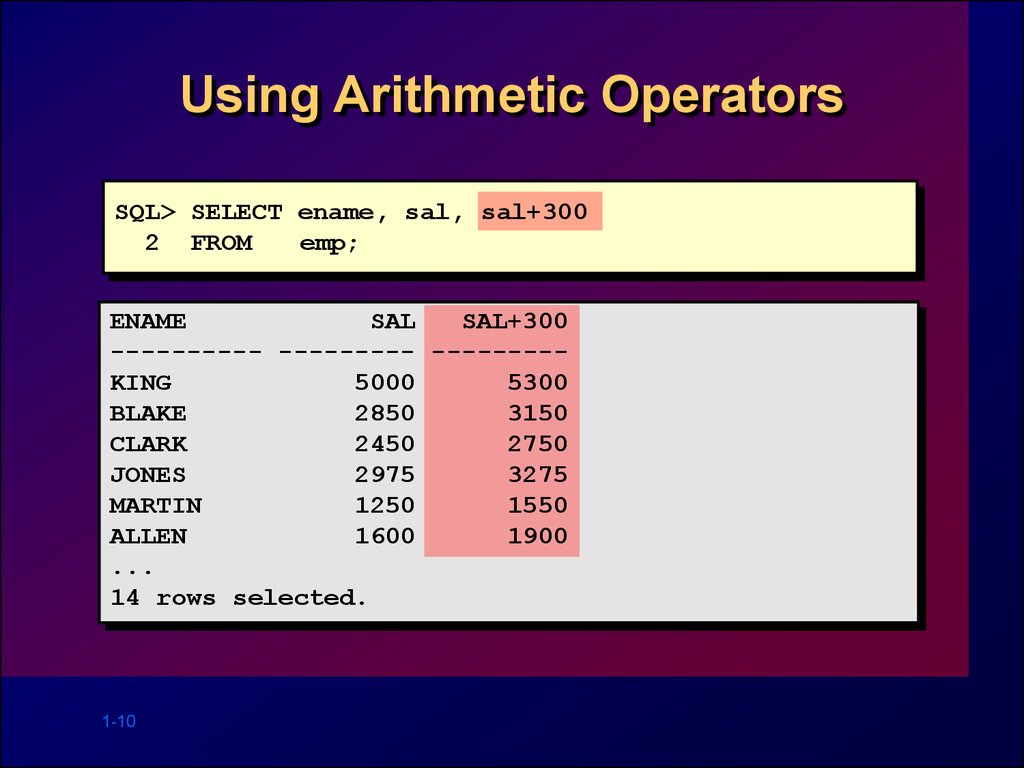

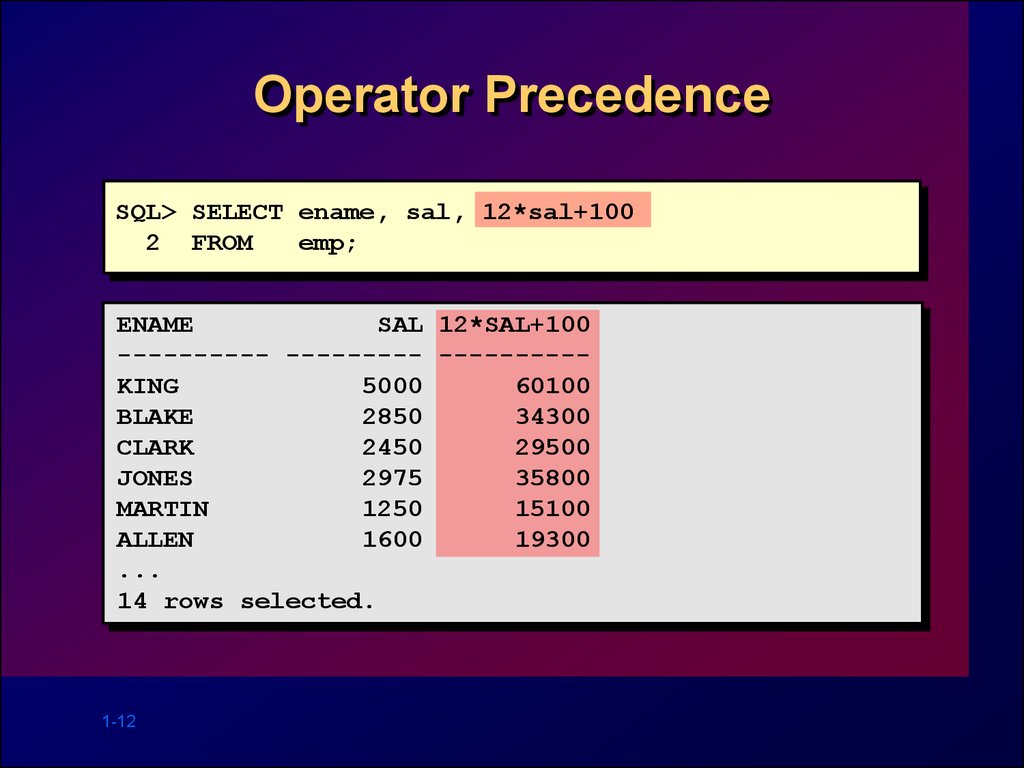


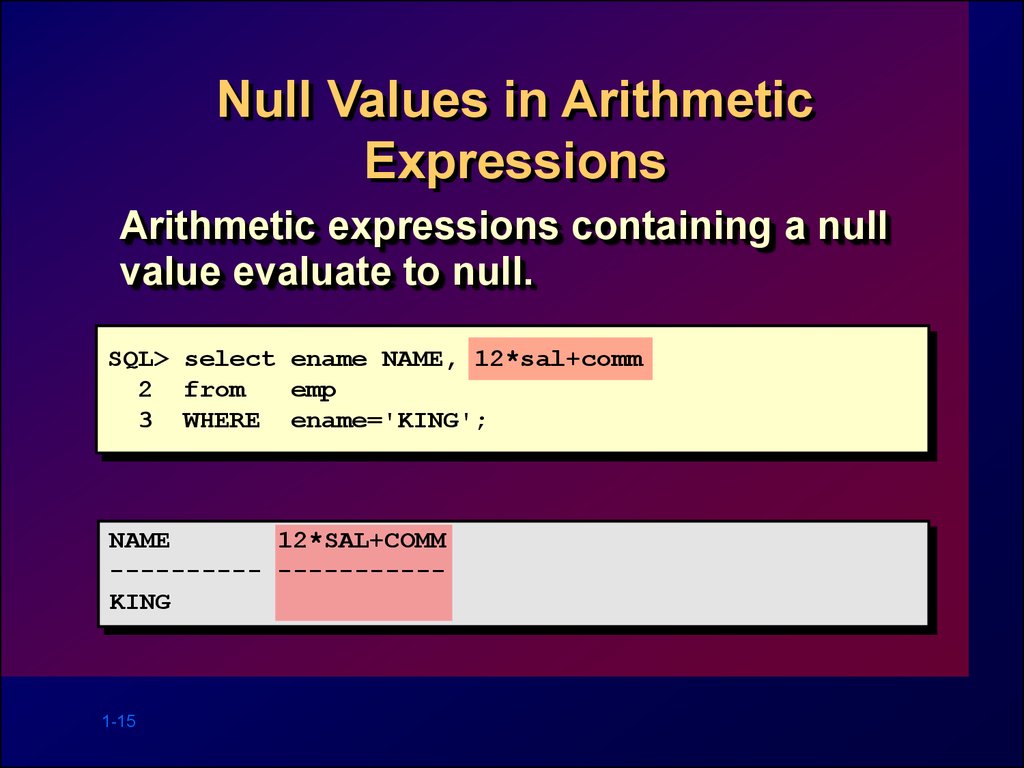
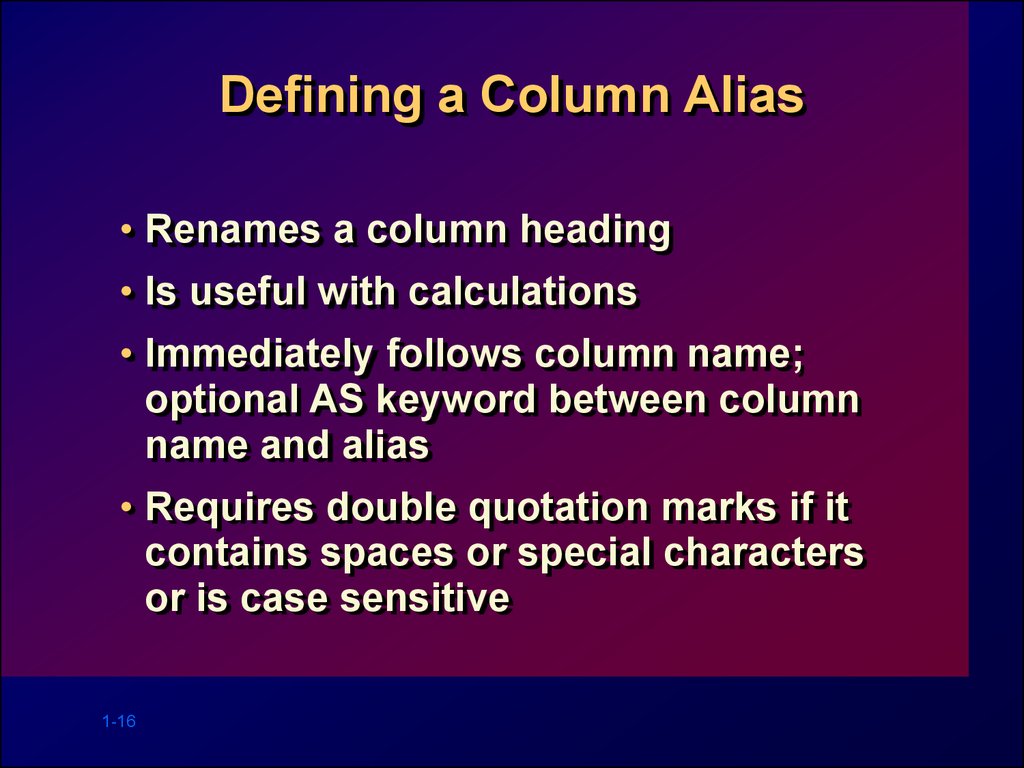
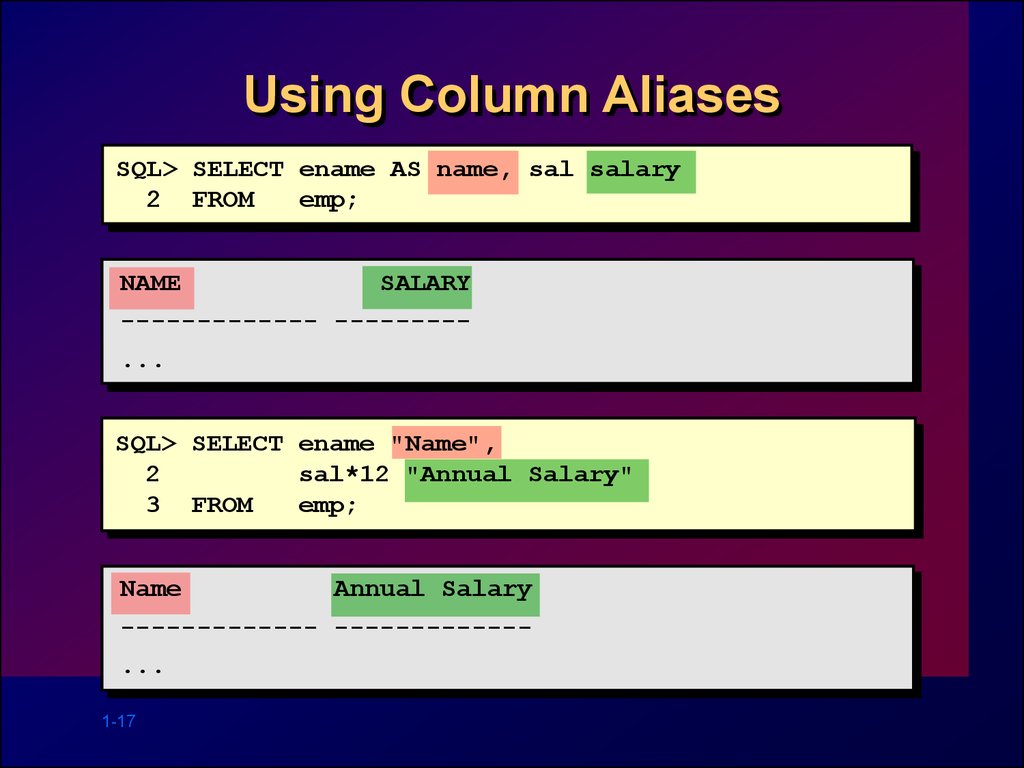
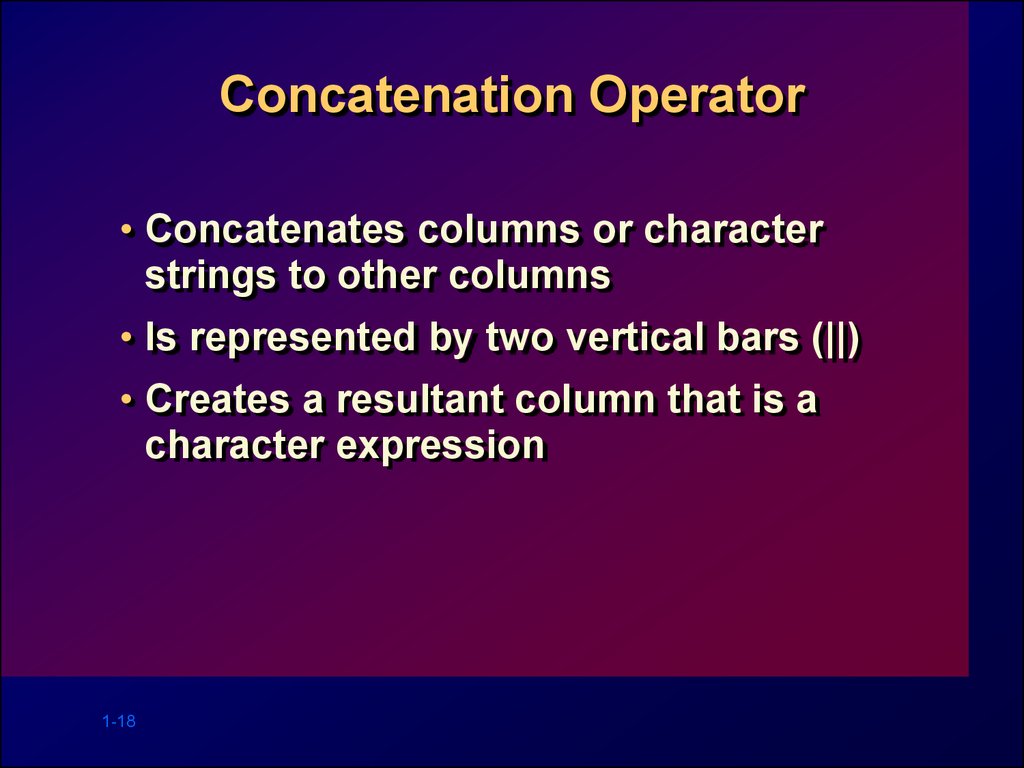
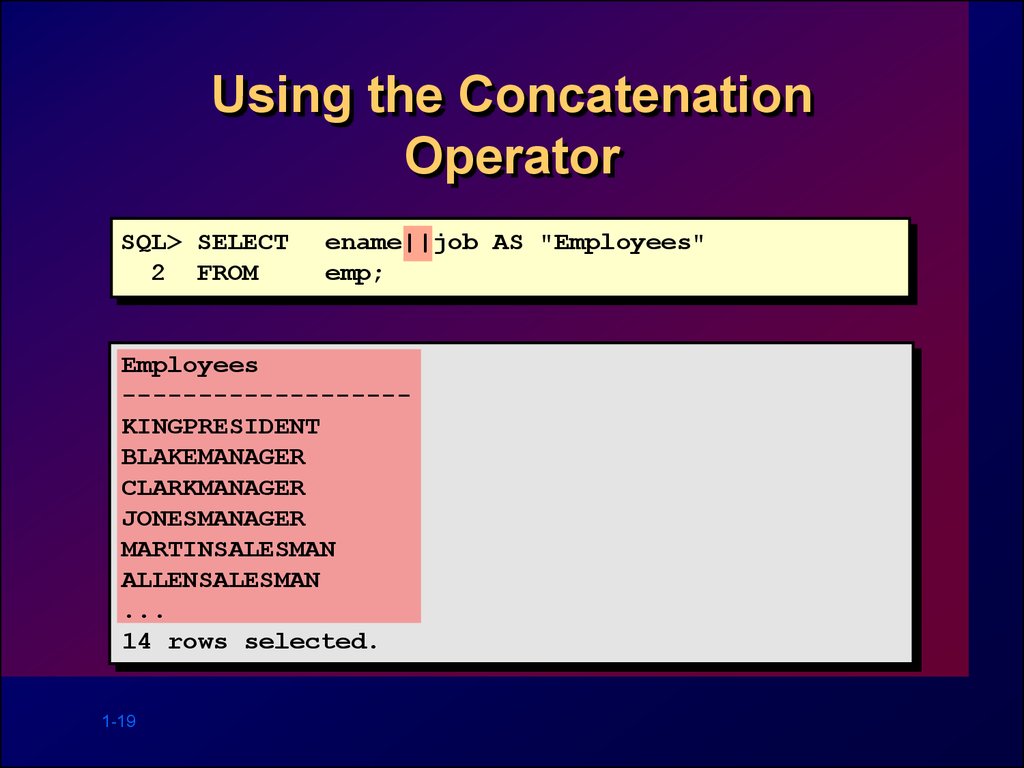
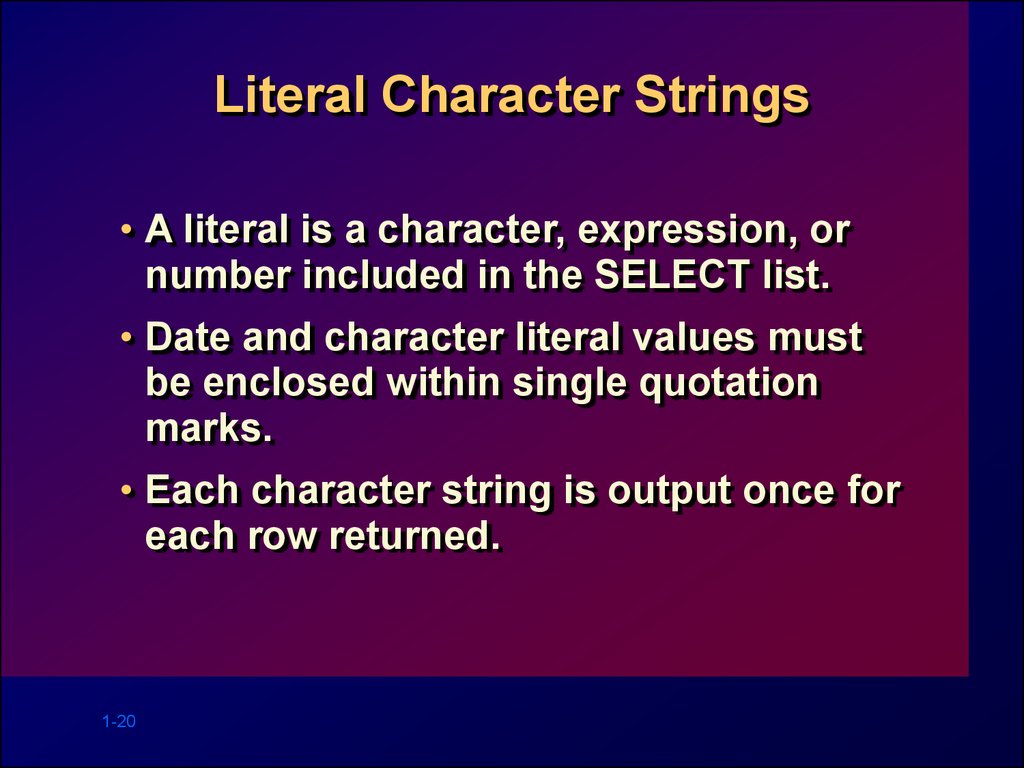
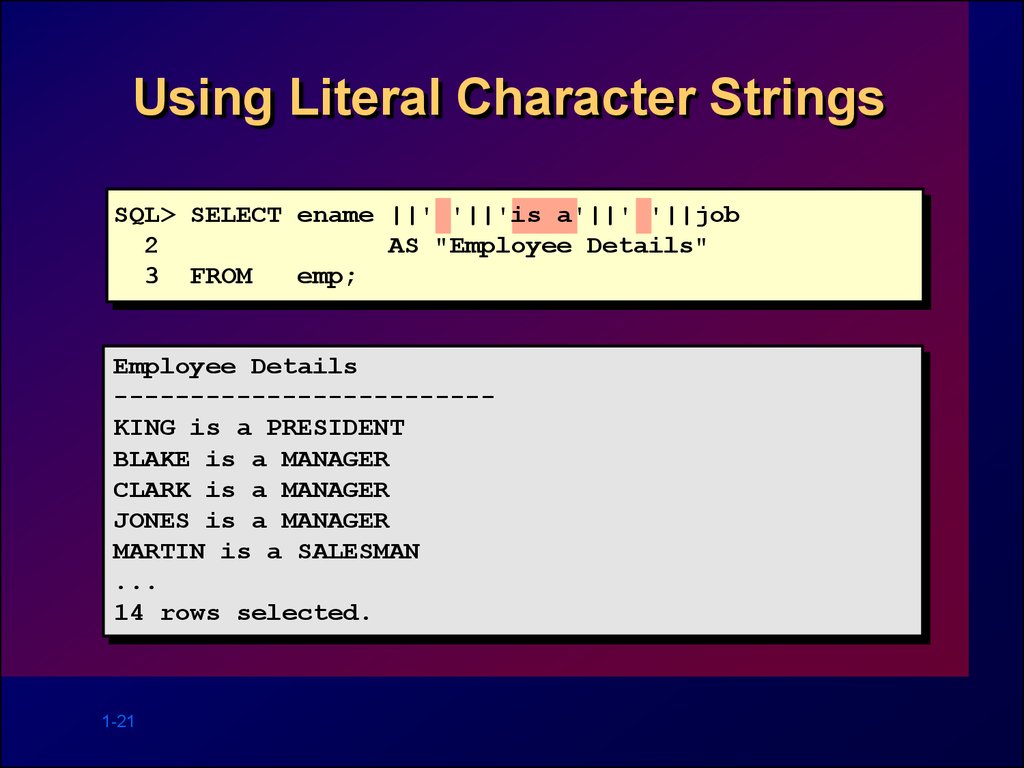
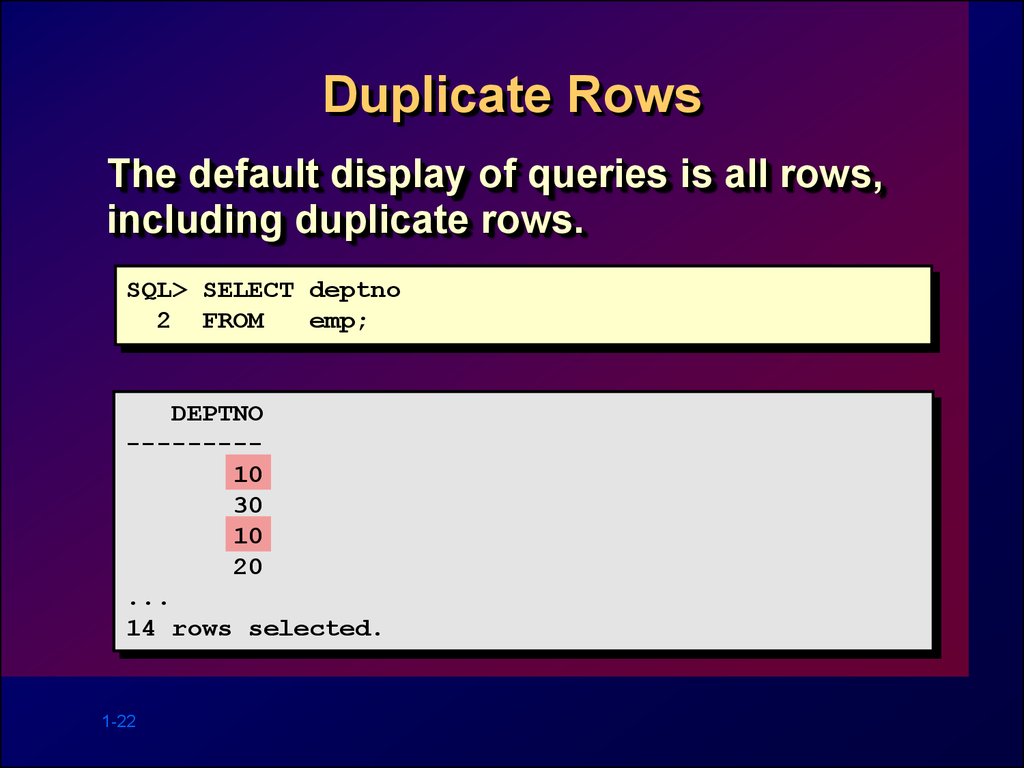

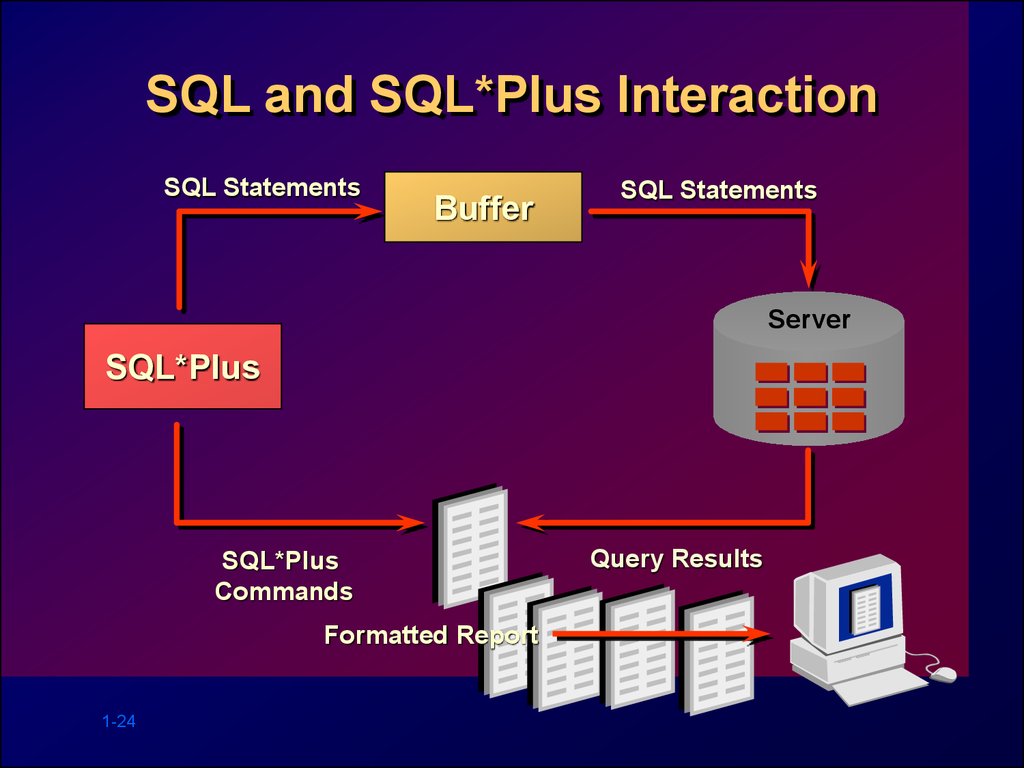
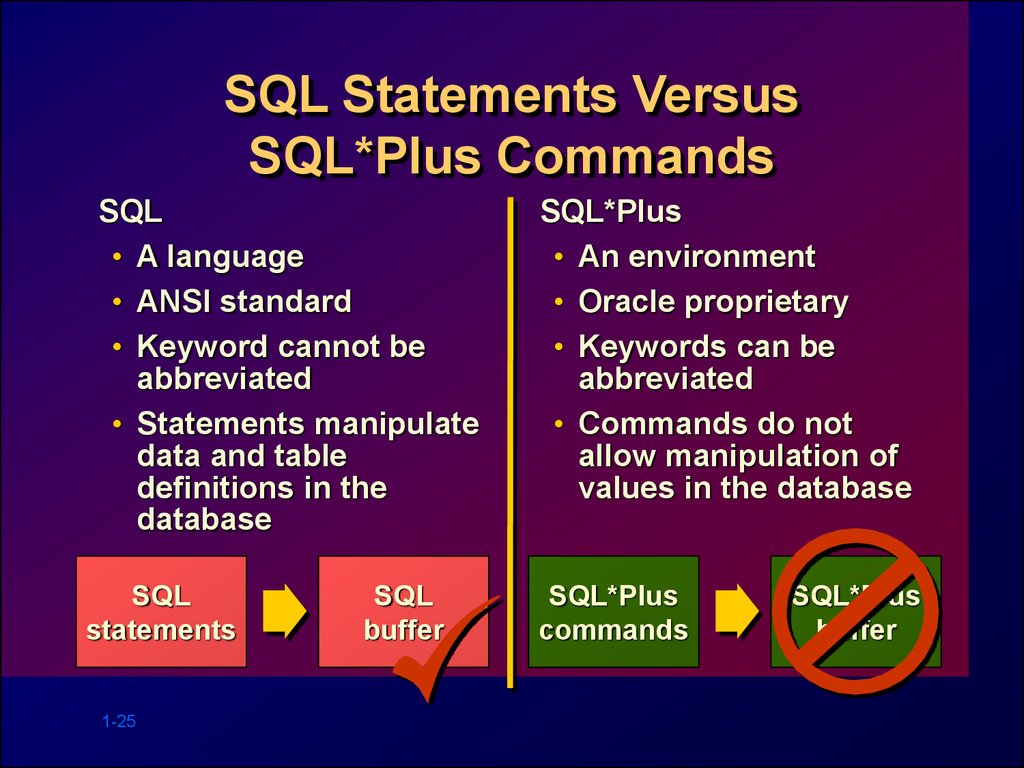
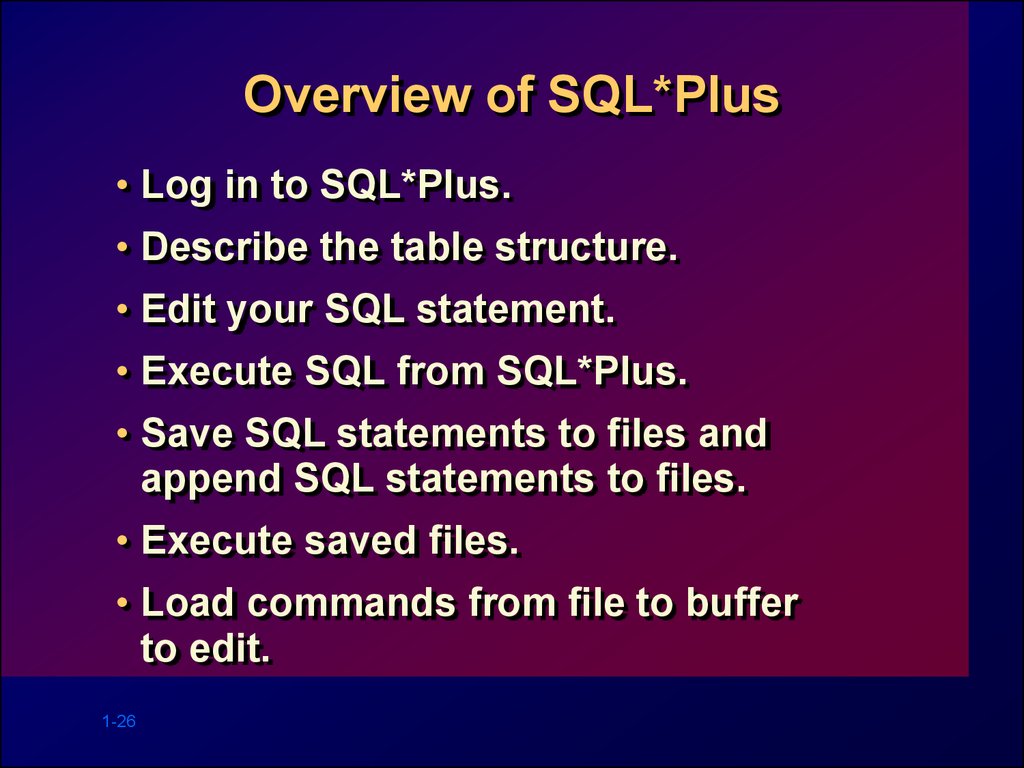

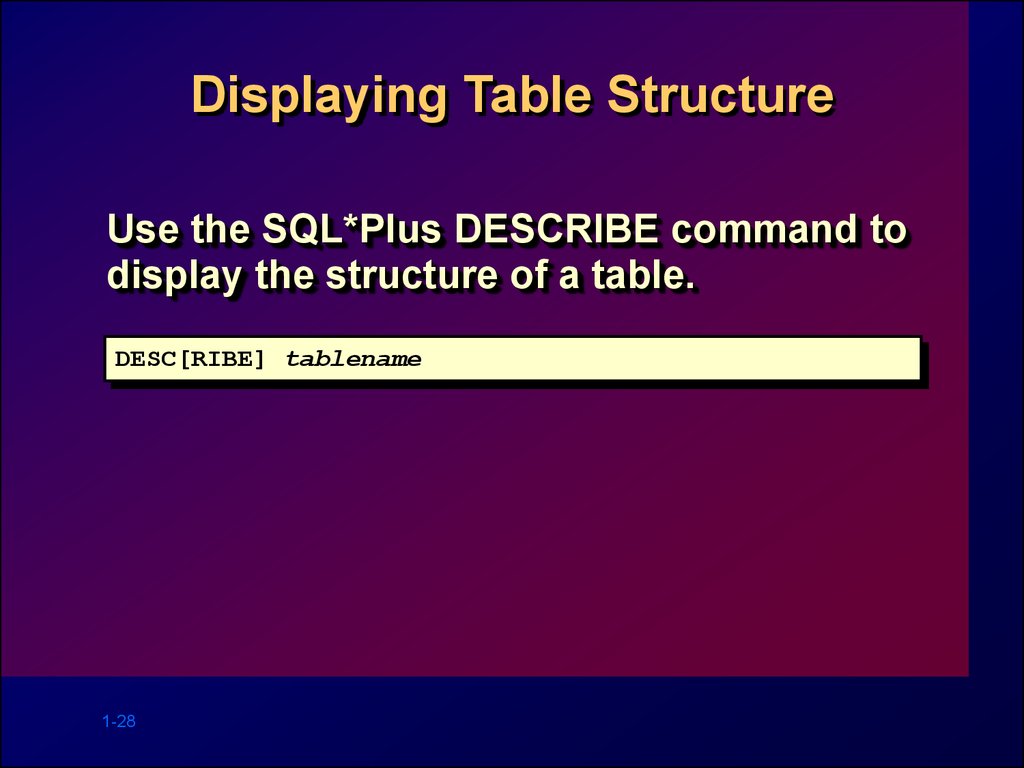
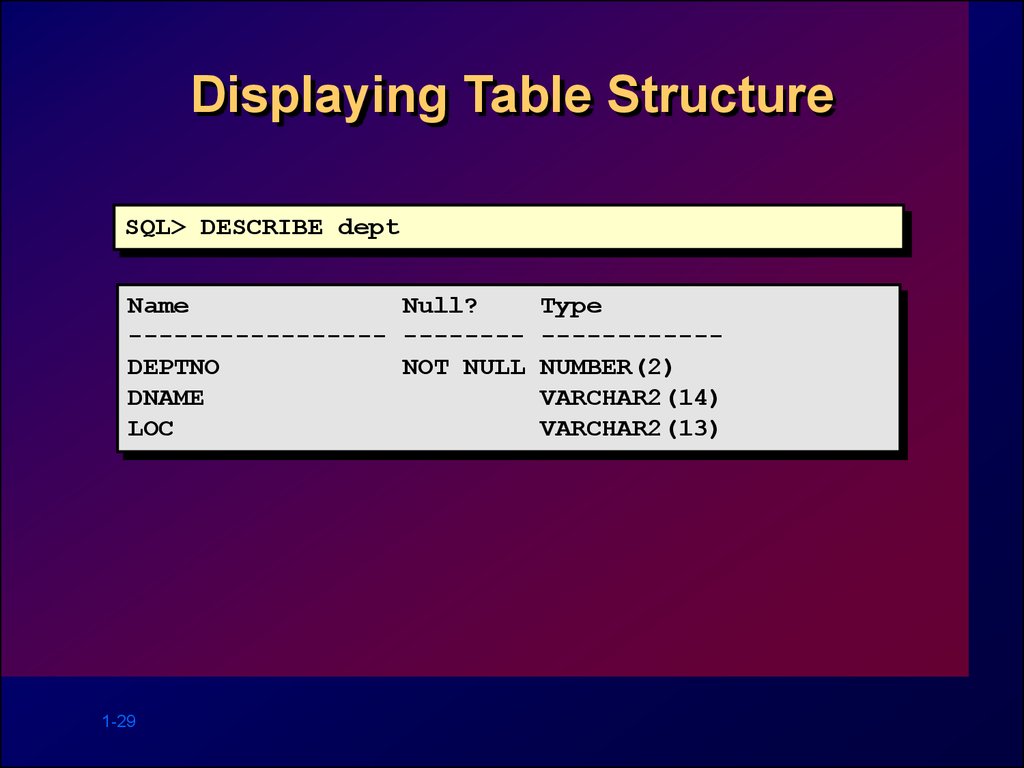
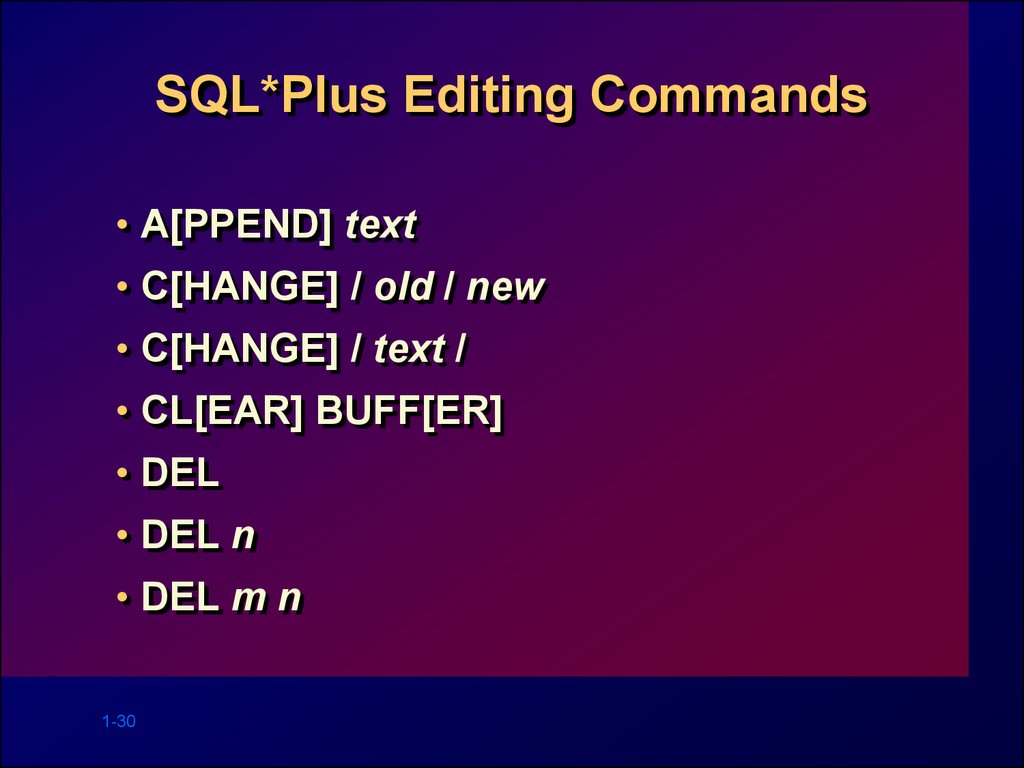
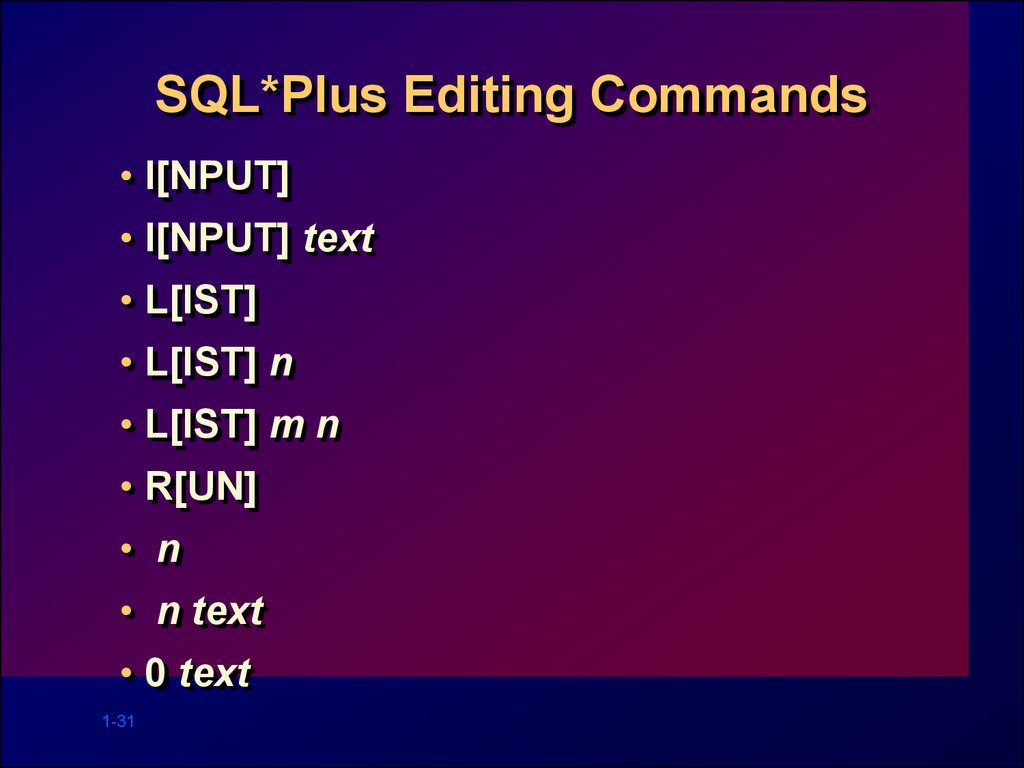
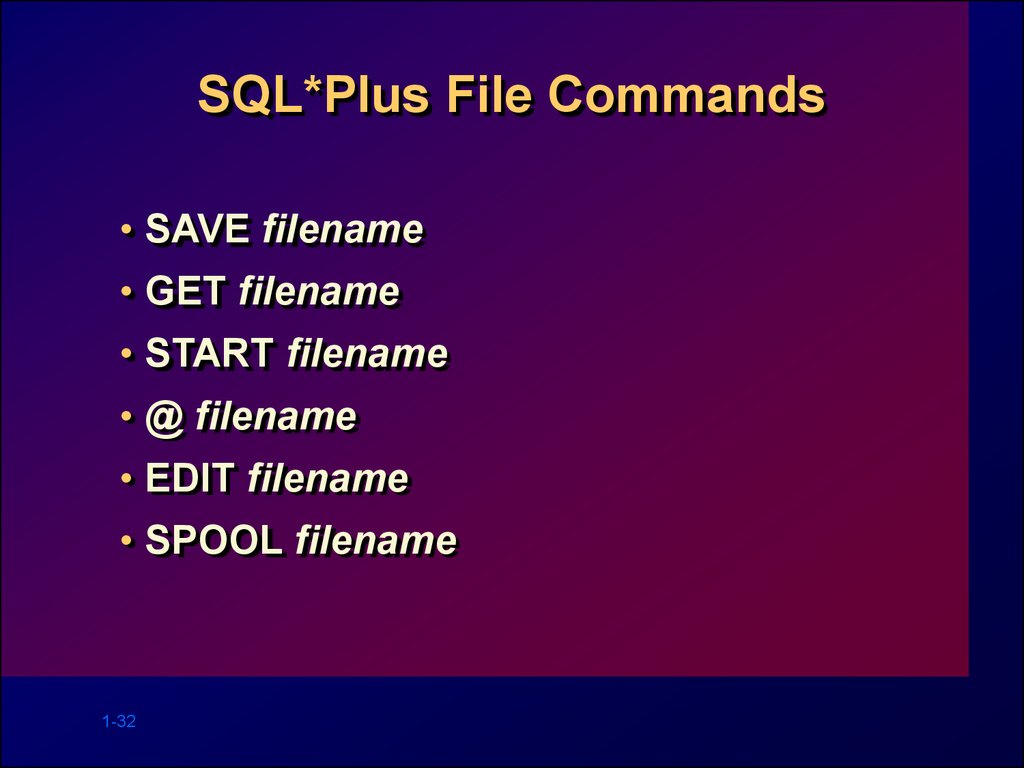
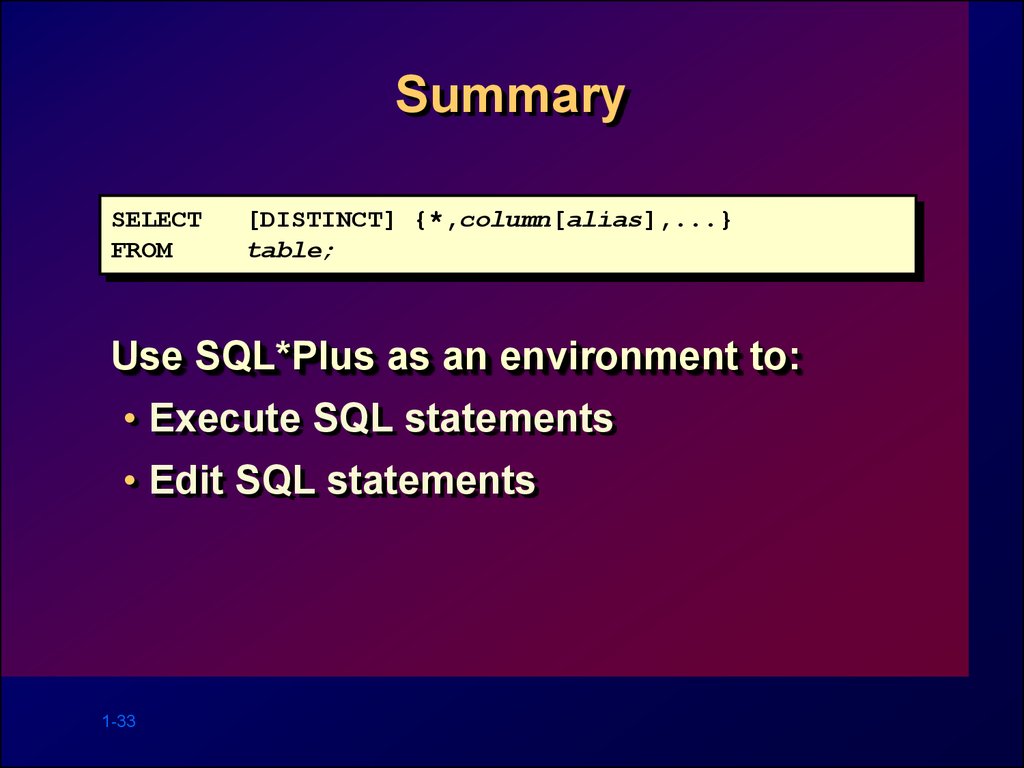

 Базы данных
Базы данных








